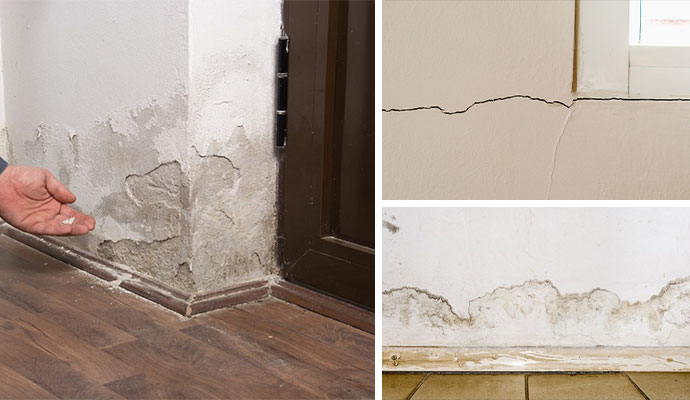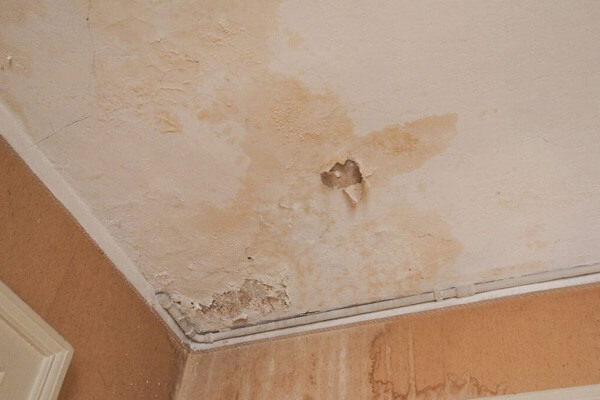Don't Let Wall Stains Linger - Best Practices For Checks And Repairs
Don't Let Wall Stains Linger - Best Practices For Checks And Repairs
Blog Article
They are making a few good annotation on the subject of Water Stains on Walls as a whole in this content which follows.

Water discolorations on wall surfaces are not enjoyable to the eyes. Your house ought to be without stains on the wall surfaces, roofing, or floors. That is the ideal state of a residence as well as its structures. Occasionally it appears practically unavoidable to experience water stains on wall surfaces in houses.
Homeowners living in damp areas continuously deal with the anxiety of water spots on wall surfaces. With precise as well as well-shaped info on the causes of water discolorations and timely repair processes, you will certainly always be a step in advance of such occurrences.
3 Typical Sources Of Water Discolorations on Walls
In contrast to popular belief, water spots on wall surfaces do not always stem from poor structure products. There are several root causes of water discolorations on walls. These include:
Poor Water drainage
This will certainly protect against water from seeping right into the wall surfaces. This links to excessive dampness that you observe on the wall surfaces of your structure.
The leading reason of damp wall surfaces, in this case, can be a poor drainage system. It can likewise be because of bad monitoring of sewer pipelines that go through the structure.
Wet
When warm moist air meets with dry cold air, it causes water droplets to form on the walls of buildings. When there is heavy steam from cooking or showers, this takes place in cooking areas and also washrooms. The water droplets can discolor the surrounding walls in these parts of your home and spread to other locations.
Wet or condensation impacts the roofing system as well as walls of structures. This triggers them to appear darker than other locations of the residence. When the wall surface is wet, it produces a suitable environment for the growth of germs and also fungi. These may have damaging impacts on health and wellness, such as allergies and also breathing problems.
Pipe Leaks
Most houses have a network of water pipes within the wall surfaces. It always boosts the viability of such pipes, as there is little oxygen within the wall surfaces.
A downside to this is that water leak affects the wall surfaces of the structure as well as creates widespread damages. A telltale sign of malfunctioning pipes is the appearance of a water tarnish on the wall.
Water Spots on Wall Surface: Repair Work Tips
When dealing with water spots, home owners would generally want a fast repair. They would certainly soon realize this is detrimental as the water discolorations recur. Here are a few practical pointers that will direct you in the repair work of water discolorations on wall surfaces:
Pro Suggestion
A houseplant in your home also enhances its humidity. If the home is already damp, you may want to introduce houseplants with minimal transpiration. An example of suitable houseplants is succulents.
Conclusion
No one wants to have water discolorations on walls in their house, it can occur to the finest of us. This short article offers you utilize, as you now understand how to handle this mishap if it does take place.
It is always best to recruit specialist solutions to assist repair the damages in your home.
Sometimes it appears nearly inescapable to experience water spots on walls in residences.
In contrast to prominent belief, water stains on wall surfaces do not constantly stem from poor building products. There are a number of causes of water discolorations on walls. The water droplets can tarnish the surrounding walls in these components of your home and also spread to various other areas.
Here are a few practical suggestions that will certainly lead you in the fixing of water spots on walls:
CHECKING FOR WATER DAMAGE
Water damage can be costly, and it may begin before you even notice the first signs of trouble. Water damage can cause mold and mildew in your walls and floors, which can create an abundance of health concerns for your family. It can also lead to costly repairs of various appliances and general home fixtures. To avoid the pricey consequences of water damage, here are Warner Service’s top 5 places you should check:
The walls – The easiest place to spot the beginnings of water damage is on the walls and ceilings of your home. If water damage is present, there will most likely be water stains, especially around the windows and doorframes, and/or cracks in the drywall. If a stain looks unusual (discolored to brown, black or gray, raised texture), has a swollen appearance or is soft to the touch, contact a professional immediately. The pipes – To avoid water damage, consistently check the pipes in your kitchen (especially the dishwasher and ice maker), bathrooms, laundry room (specifically washing machines) and basement for corrosion, leaks and water stains. Pay special attention to where the pipes connect in your home and the location of caulking around the bathroom fixtures, including toilets, sinks, showers and tubs. Missing or loose caulking and grout could be signs of leaking water. This seepage can also quickly cause mold and rust, so double check your water heater and tank for wet spots on the floor. The floor – Water damage is very easy to spot on the floor. Look for any warping or buckling of the material, especially in the basement. If your home has wood flooring, look for bright white or dark stains. If your home has carpeting, keep it dry and clean. A damp carpet that smells of mold could cause water damage and health problems. To avoid this, consider installing floor pans under your appliances to help prevent damages from small, slow and undetected leaks. The basement and attic – If your basement or attic smells odd check for mold and mildew around the area, especially the valley where the roof meets. While you are inspecting those areas, check for wall cracks, floor stains, rust and dampness in the insulation. If you live in a colder and/or rainier climate, perform routine checks for water damage from melting snow or ice and rain. The exterior – Check the roof for damaged flashing and missing, cracked or curled shingles. There should also be no standing water anywhere outside your home. This could be caused by puddles, leaky rain gutters or hoses, poor drainage, or short gutter spouts. Invest in a sump pump system or water flow monitoring system, and perform routine maintenance on these outdoor appliances to avoid indoor water damage.

As an enthusiastic reader on Indicators of Water Damage Behind Walls, I was thinking sharing that piece of content was really helpful. Are you aware of another individual who is fascinated by the subject? Take a moment to share it. Thanks for taking the time to read it.
Details Here
Report this page